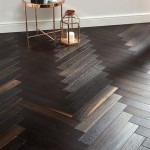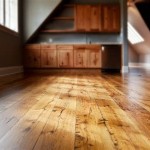Essential Aspects of Engineered Oak Flooring: Benefits and Drawbacks
Engineered oak flooring has become increasingly popular in recent years, offering both advantages and disadvantages compared to traditional solid oak flooring. Understanding these aspects is crucial when selecting the most suitable flooring option for your needs.
Benefits of Engineered Oak Flooring
Stability and Durability
Engineered oak flooring is highly stable, resisting warping, buckling, and splitting. Its multi-layer construction, with a core of plywood or other materials topped with a veneer of oak, provides exceptional strength and dimensional stability compared to solid wood.
Moisture Resistance
Unlike solid wood, engineered oak flooring can withstand moisture fluctuations better. The core materials and adhesives used in its construction make it less susceptible to moisture damage, making it ideal for areas prone to humidity or occasional spills.
Versatility
Engineered oak flooring is available in various styles, finishes, and plank sizes, providing a wide range of design options. It can be installed over various subfloors, including concrete and radiant heat systems, increasing its versatility.
Affordability
Compared to solid oak flooring, engineered oak flooring is typically more affordable due to the use of less expensive core materials. It offers the look and feel of real oak at a lower cost.
Drawbacks of Engineered Oak Flooring
Thinner Wear Layer
Engineered oak flooring has a thinner wear layer than solid oak flooring, which can limit the possibilities for refinishing. Once the wear layer is worn, the flooring may need to be replaced instead of refinished.
Limited Lifespan
While engineered oak flooring is durable, its lifespan is generally shorter than solid oak flooring. The wear layer can wear down over time, especially in high-traffic areas, requiring replacement sooner than solid wood.
Environmental Considerations
The manufacturing process of engineered oak flooring involves adhesives and other materials, which can raise some environmental concerns. Solid oak flooring is considered a more sustainable and eco-friendly option.
Conclusion
Engineered oak flooring offers numerous benefits, including stability, moisture resistance, versatility, and affordability. However, its thinner wear layer, limited lifespan, and potential environmental impact are important considerations. When choosing between engineered and solid oak flooring, carefully evaluate your specific needs and preferences to make an informed decision.

Engineered Wood Flooring Homeowner Pros Cons

10 Major Disadvantages Of Installing Engineered Wood Flooring A Floor Guide Reallyfloors America S Est Hardwood

The Compelling Benefits Of Engineered Oak Flooring Mulveys Dundrum

Hardwood Vs Engineered Wood Flooring Which Is Best For You Forbes Home

Engineered Wood Flooring Pros And Cons Forbes Home

Advantages Disadvantages Of Engineered Wood Floors Floorings

Engineered Oak Timber Vs Hardwood Solid Smarter Flooring

Pros And Cons Of Engineered Wood Flooring

Engineered Hardwood Vs Laminate

6 Benefits Of Engineered Wood Flooring That Make It Perfect For Your Home Flooring365 Blog
See Also







